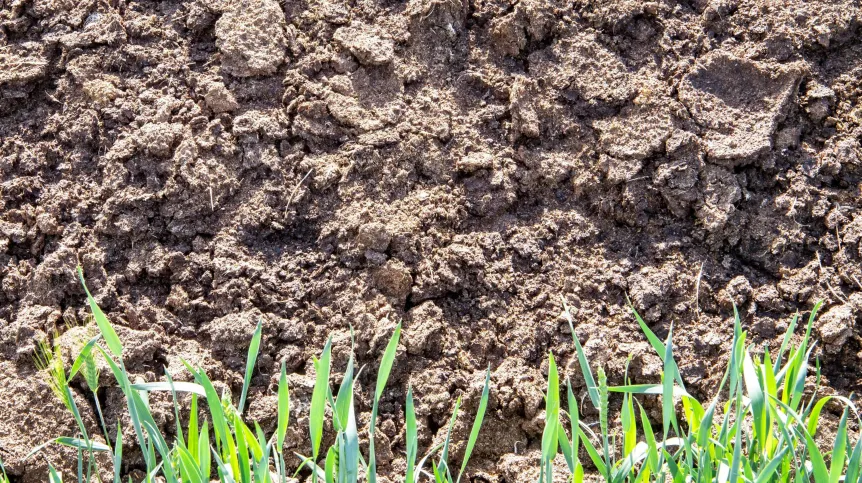
An international research team including Polish scientists is working on climate-friendly soil management methods to enrich soil with humins - organic matter resistant to microbiological decomposition.
Soil is globally the largest storage of carbon, which is bound in organic matter in the soil. Unfortunately, its life is generally not long, because over time it undergoes mineralisation with the participation of microorganisms, and the released carbon is emitted into the atmosphere. Climate change associated with carbon dioxide emissions prompt researchers to look for ways to increase carbon content in the soil, in more stable forms.

Plants collect carbon dioxide from the air and build carbon into their tissues. After the plant dies, these tissues are transformed into organic matter in the soil as a result of complicated biochemical processes. Thus, carbon is removed from the atmosphere and stored in plants and soil.
INTERNATIONAL FIELD RESEARCH
Researchers will select these agrotechnical methods that can affect the optimal content of organic carbon in the soil. They will determine the stability of soil organic matter depending on management conditions under various climatic conditions in Europe and the USA.
'We have access to unique multiannual field studies conducted by our partners on various soils, in various climatic conditions', says the project leader, Professor Jerzy Weber from the Institute of Soil Science, Plant Nutrition and Environmental Protection at the Wrocław University of Environmental and Life Sciences.
The leader of the consortium 'SOMPACS - soil management effects on Soil Organic Matter Properties And Carbon Sequestration' is the Wrocław University of Environmental and Life Sciences, the remaining Polish centres involved in the project are the Warsaw University of Life Sciences, the Institute of Agrophysics PAS in Lublin, the West Pomeranian University of Technology in Szczecin, University Wrocław and a the Agricultural Producers Hroup TERRA from Prusice near Złotoryja.
HUMINS RESISTANT TO DECAY
The researchers will check how different methods of soil use and cultivation affect the formation of the fraction that has the highest resistance to decomposition processes. This fraction is called humins.
Professor Jerzy Weber explains that humic substances in the soil are studied by dissolving them in alkali, which allows to separate their individual fractions. That is how Profesor Stanisław Tołpa obtained his immunological formulation, which was a pharmaceutical sensation in the 1980s.
Humins is difficult to study because they do not dissolve in alkali. 'In Wrocław, this fraction will be isolated by removing all other ingredients of the soil material by the method published in 2021. At the University of Limerick in Ireland, the extraction method will be used for this, and the fractions obtained by both methods will be analysed by all participants of the international consortium. We will try to determine how different soil uses affect the humin content and properties', Weber explains.
CLIMATE FRIENDLY WAYS TO MANAGE THE SOIL
The researchers will collect samples from eight long-term field experiments with various soil management systems in Lithuania, Italy, Ireland and Poland (in the latter case, used for a century), as well as from the world's longest British Broadbark experiment carried out continuously for 178 years.
These systems include conventional and ploughless cultivation, mineral and organic fertilization, cultivation with and without catch crop, arable lands and grassland, cultivated and uncultivated soil.
Experiments will also be conducted in production fields, where, in addition to the previous methods of cultivation, additives stimulating root growth will be used (commercial humus products, biocarbon, biogas digestate). The effects of these additives on the content and properties of soil organic matter will be examined in field experiments and incubation research on microbiological decomposition. In parallel to collecting soil samples, the yield will be determined in field experiments and CO2 emissions from the soil will be measured in field conditions.
'Basic soil properties will be supplemented with an analysis of enzymatic activity, testing water retention, soil hydrophobicity and structural stability, mineralogical composition of soil colloids, as well as expert analyses of microbiological properties, including microbiome and miycrobiome genetics', explains Professor Jerzy Weber.
HIGEST SCORE IN A EUROPEAN COMPETITION
The project of the international consortium led by the Wrocław University of Life Sciences was the top selected project was the highest rated in the first external call of the European Joint Programme 'EJP SOIL - Towards climate-smart sustainable management of agricultural soils'.
The aim of the competition is foster holistic agricultural (forestry soils are not excluded) soil management practices which will assist in making a shift to diversify farming to include a variety of sustainable and environmental practices. From ampng approx. 80 submitted projects, 11 were selected for financing. The highest rated project was SOMPACS.
Research will take continue until 2025. In addition to Polish institutions, the project will be carried out by: the University of Limerick (Ireland), the University of Rostock (Germany), the University of Wyoming (United States), the University of Naples (Italy), Vytautas Magnis University and Agricultural Academy in Kaunas (Lithuania), Rothamsted Research in Harpenden (UK). In Poland, research will be financed by the National Centre for Research and Development, with a total of 200,000 euros allocated for this purpose.
PAP - Science in Poland, Karolina Duszczyk
kol/ agt/ kap/













